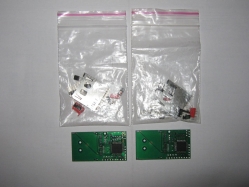
Autopsy:
SD2IEC is a hardware mass storage device using an SD/MMC card and interfacing with the IEC bus. It is based on the ATmega644 microcontroller from the Atmel AVR microcontroller family. The most prominent use of SD2IEC is emulation/replacement of a Commodore-1541 disk drive for a C64.
Hardware and the microcontroller’s firmware is available as open source (GPL).
source: sd2iec.de gitweb forum thread c64-wiki
 Euskal Encounter is a computer party for computer amateurs and professionals seeking a knowledge exchange and willing to be involved for a few days in any kind of activity related to computers.
Euskal Encounter is a computer party for computer amateurs and professionals seeking a knowledge exchange and willing to be involved for a few days in any kind of activity related to computers.
C64 – Mixed Graphics:
- 1 Cauldron2 by JSL
- 2 Loving Dream by Almighty God
- 4 Classics Never Die by Stage7
C64 – Mixed Music:
- 2 Funky Old Bones by SIDwave
- 4 Sunshine Dreams by A-Man
- 5 Boogie 8580 by NecroPolo
source: noname.c64.org euskalencounter.org
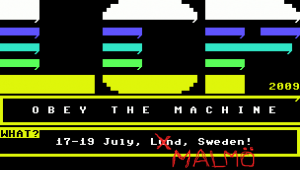 Most of the compo stuff is now up in the archive. You can also find some photos there.
Most of the compo stuff is now up in the archive. You can also find some photos there.
source: lcp.c64.org

JiffyDOS is a Disk Operating System (DOS) enhancement which gives your VIC-20, C-16, PLUS/4, C-64, or C-128 the disk access speed it has always needed.
A chip-for-chip replacement for the Kernal ROM in your computer and the DOS ROM in your disk drive(s), JiffyDOS achieves levels of performance and compatibility unmatched by other disk speed-enhancement products.
Download:
TRY and BUY the original copy.
source: cmdrkey.com
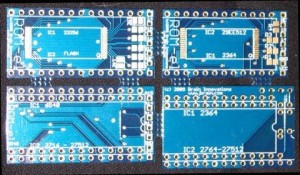 from Homepage:
from Homepage:
The PCB house shipped the first two ROM-el boards for inspection and testing.
Once they are assembled and testing, I will release the design to production. As one can see, the PCB is a merged set of 4 designs. The tabs between the designs are designed to be broken, separating the individual units after assembly.
source: jbrain.com
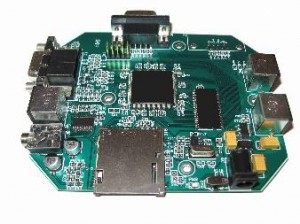 from Homepage:
from Homepage:
This Multiple Classic Computer Platform lets dreams come true.
The Classic Computer and Classic Arcade fans are just waiting for a device which allows them to go back to the good and easy operation and gaming experience from the past.
Many people still have unique software and programs which are still unbeatable when it comes to user friendliness. The reconfigurable and generic design will allow an easy switch between multiple different realizations and representations of classic computers.
When we look to the 80ies and 90ies, names like Atari ST, Sinclair’s ZX-Spectrum, Commodores VC20, VC-64 and the whole Amiga Series 500, 1000, 2000 come to mind.
main Features:
- Old Joystick interfaces allow the usage of classic input devices.
- A stereo/audio output allows the connection to each TV set, amplifier or computer monitor to explore enhanced sound.
- Different versions for PAL and NTSC regions allow seamless usage and compatibility.
- All this paired with the newest available hardware and new interface, like SD-Card, S-Video and RGB Output, improve the picture quality and the openness of the systems.
- An internal memory enables the permanent storage of favorite games and applications, the menu overlay allows for easy selection of the application or game and the desired Classic Computer.
source: arcaderetrogaming.com
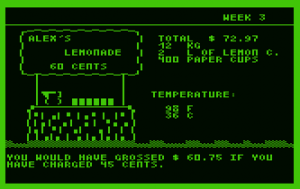 This is a Conversion from Commodore 64 of a classic Lemonade Stand managing game. Your goal in this fun little game will be to make as much money as you can within the 12 summer weeks.
This is a Conversion from Commodore 64 of a classic Lemonade Stand managing game. Your goal in this fun little game will be to make as much money as you can within the 12 summer weeks.
Play it in 40 columns!
source: Denial (The Commodore VIC-20 forum)
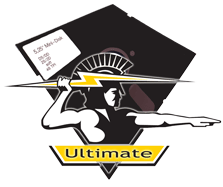 from 1541 Ultimate homepage:
from 1541 Ultimate homepage:
Some of you might have noticed that the order form has been temporarily closed, and many questions and rumours have been going around about the future of the 1541 Ultimate. The reason behind all this, is that behind the screens I have been working on a successor of the “1541 Ultimate”. How this unit will be called has not yet been determined, but it could be something as simple as “1541 Ultimate II” or “Ultimate Cartridge”.
What is it, and why was it designed? Basically, it is a scaled down version of the 1541U. It will provide similar functionality, although some things have been changed. It will no longer support full-size SD-cards, but only MircoSD, or “Transflash”. Also, Ethernet will not be supported until further notice. It will support tape emulation out of the box (without the need for special FPGA images) and it will provide a real-time clock function with battery back up. Audio output has been significantly improved, which might seem useless for just the drive sounds, but this enables the creation of FPGA images that provide additional sound channels of useful quality. The power consumption has been reduced as well. There is one extra cool feature that will not yet be disclosed ;-)
And last but not least… This unit will come with a case! At least, that is the plan; there are some negociations going on with manufacturers for plastic insertion moulding. It seems feasible to have this done, although it’s pricy for low quantities. A prototype is 3D-printed this week; the prototype board is already there and functional.
source: 1541ultimate.net
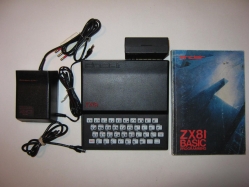
Autopsy:
from Wikipedia:
The Sinclair ZX81 was a home computer released in 1981 by Sinclair Research. It was the follow-up to the Sinclair ZX80. The machine’s distinctive appearance was the work of industrial designer Rick Dickinson.
Video output, as in the ZX80, was to a television set, and saving and loading programs was via an ordinary home audio tape recorder to audio cassette. Like its predecessor it used a membrane keyboard. Timex Corporation manufactured kits as well as assembled machines for Sinclair Research.
In the United States a version with double the RAM and an NTSC television standard was marketed as the Timex Sinclair 1000.
source: wikipedia
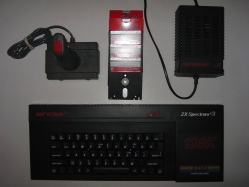
Autopsy:
from Wikipedia:
The ZX Spectrum +3 looked similar to the +2 but featured a built-in 3-inch floppy disk drive (like the Amstrad CPC 6128) instead of the tape drive, and was in a black case. It was launched in 1987, initially retailed for £249 and then later £199 and was the only Spectrum capable of running the CP/M operating system without additional hardware.
The +3 saw the addition of two more 16 KB ROMs. One was home to the second part of the reorganised 128 ROM and the other hosted the +3′s disk operating system. This was a modified version of Amstrad’s AMSDOS, called +3DOS. These two new 16 KB ROMs and the original two 16 KB ROMs were now physically implemented together as two 32 KB chips. To be able to run CP/M, which requires RAM at the bottom of the address space, the bank-switching was further improved, allowing the ROM to be paged out for another 16 KB of RAM.
Such core changes brought incompatibilities:
- Removal of several lines on the expansion bus edge connector (video, power, and IORQGE); caused many external devices problems; some such as the VTX5000 modem could be used via the “FixIt” device
- Dividing ROMCS into 2 lines, to disable both ROMs
- Reading a non-existent I/O port no longer returned the last attribute; caused some games such as Arkanoid to be unplayable
- Memory timing changes; some of the RAM banks were now contended causing high-speed colour-changing effects to fail
- The keypad scanning routines from the ROM were removed
- move 1 byte address in ROM
Some older 48K, and a few older 128K, games were incompatible with the machine.
The +3 was the final official model of the Spectrum to be manufactured, remaining in production until December 1990. Although still accounting for one third of all home computer sales in the UK at the time, production of the model was ceased by Amstrad at that point.
source: wikipedia divide homepage divide forum
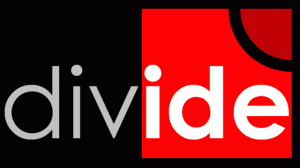
Autopsy:
from Divide homepage:
divIDE is an ATA (IDE) interface which takes your ZX Spectrum computing to a whole new level. As the time takes its toll on ageing media such as audio tapes or diskettes, many ZX Spectrum enthusiasts simply stick to emulation for better reliability and comfort.
With divIDE you can put your software collection to a hard disk, CD-ROM or even CompactFlash card and experience your favourite games, demos and utilities the way the were meant to be run – and even better. Using existing firmwares, many users find their Speccy box again a live platform – time for you to make the switch?
Features:
- divIDE uses full 16 bits of ATA bus.
- divIDE works on all ZX Spectrum flavours (16, 48, 48+, 128, +2, +2A, +3 and clones)
- Thanks to divIDE’s onboard logic, theoretical transfer speed is 218 KB/sec (determined by the latency of INI/OUTI instructions).
- divIDE has 8 KB of shadow flash ROM that hosts operating system core, leaving your original ZX Spectrum ROM intact. Additional 32 KB of RAM accessible as 8 KB memory banks are present.
- divIDE’s auto-mapping feature transparently maps shadow ROM at important entry points, enabling standard tape emulation, BASIC extensions, NMI menu and DISCiPLE/+D or BetaDisk emulation.
- divIDE’s MAPRAM feature helps developers and users to test new software without the need of reflashing their working system in shadow ROM. It can also emulate another 8 KB of ROM if necessary.
- divIDE works with all ATA-compatible devices (there are no known compatibility issues).
- Available software supports widely used emulator formats (TAP, SNA, Z80, SCR). Just download your all-time favourite games from the web and play!
source: divide homepage divide forum
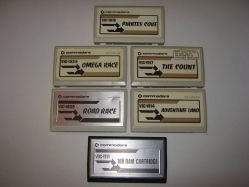
Cartridges list:
- VIC-1909 – Road Race.
- VIC-1911 – 16k RAM Cartridges.
- VIC-1914 – Adventure Land.
- VIC-1915 – Pirate’s Cove.
- VIC-1917 – The Count.
- VIC-1924 – Omega Race.
Autopsy:
from Wikipedia:
As for commercial software offerings, an estimated 300 titles were available on cartridge, and another 500+ titles were available on tape. By comparison, the Atari 2600—the most popular of the video game consoles at the time—had a library of about 900 titles near the end of its production life (many were variations of another title).
Most cartridge games were ready to play as soon as VIC-20 was turned on, as opposed to games on tape which required a time-consuming loading process. Titles on cartridge included Gorf, Cosmic Cruncher, Sargon II Chess, and many others.
source: wikipedia
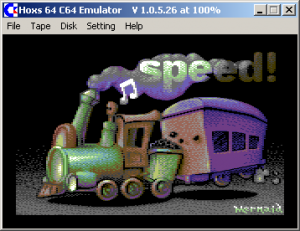 Hoxs64 is a Commodore 64 emulator for Microsoft Windows 2K/XP/Vista.
Hoxs64 is a Commodore 64 emulator for Microsoft Windows 2K/XP/Vista.
The emulator substantially reproduces this legacy machine in minute detail.
Changelog:
12 July 2009 v1.0.5.26
1) Bug fix to the FDI file format reader. Rapidlok game Serve and Volley now works. Many other FDI
captures now work.
2) New “Disk on Separate Thread” option added to the general settings page. Multi-core CPUs will provide
increased performance when the serial bus is idle.
3) 1541 drive fixes.
4) Numerous VIC mid raster line mode change fixes. A newly discovered edge triggered raster IRQ behaviour
is now implemented as seen on both old and new VIC chips.
5) Joystick fixed to prevent opposing directions from being simultaneously pressed.
source: hoxs64.net




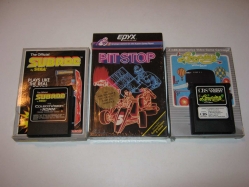



 Euskal Encounter is a computer party for computer amateurs and professionals seeking a knowledge exchange and willing to be involved for a few days in any kind of activity related to computers.
Euskal Encounter is a computer party for computer amateurs and professionals seeking a knowledge exchange and willing to be involved for a few days in any kind of activity related to computers. Most of the compo stuff is now up in the
Most of the compo stuff is now up in the 
 from Homepage:
from Homepage: from Homepage:
from Homepage:
 from 1541 Ultimate homepage:
from 1541 Ultimate homepage:































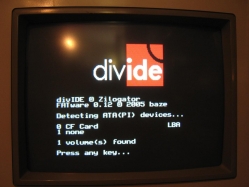




















 Hoxs64 is a Commodore 64 emulator for Microsoft Windows 2K/XP/Vista.
Hoxs64 is a Commodore 64 emulator for Microsoft Windows 2K/XP/Vista.


Recent Comments